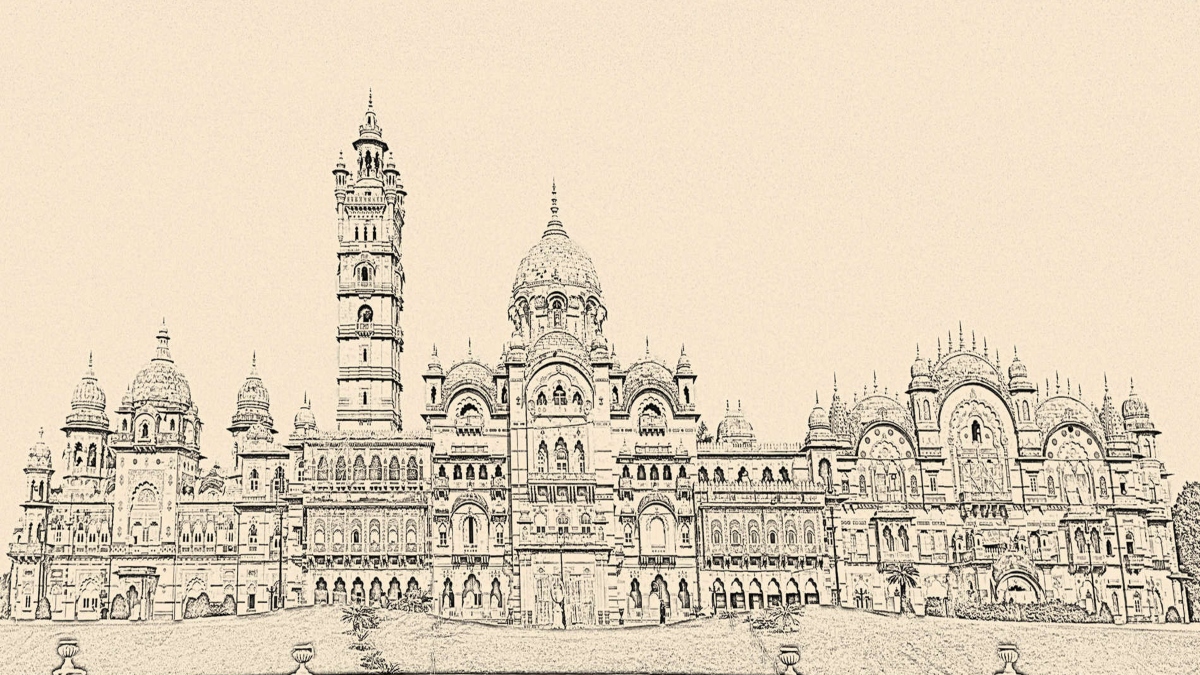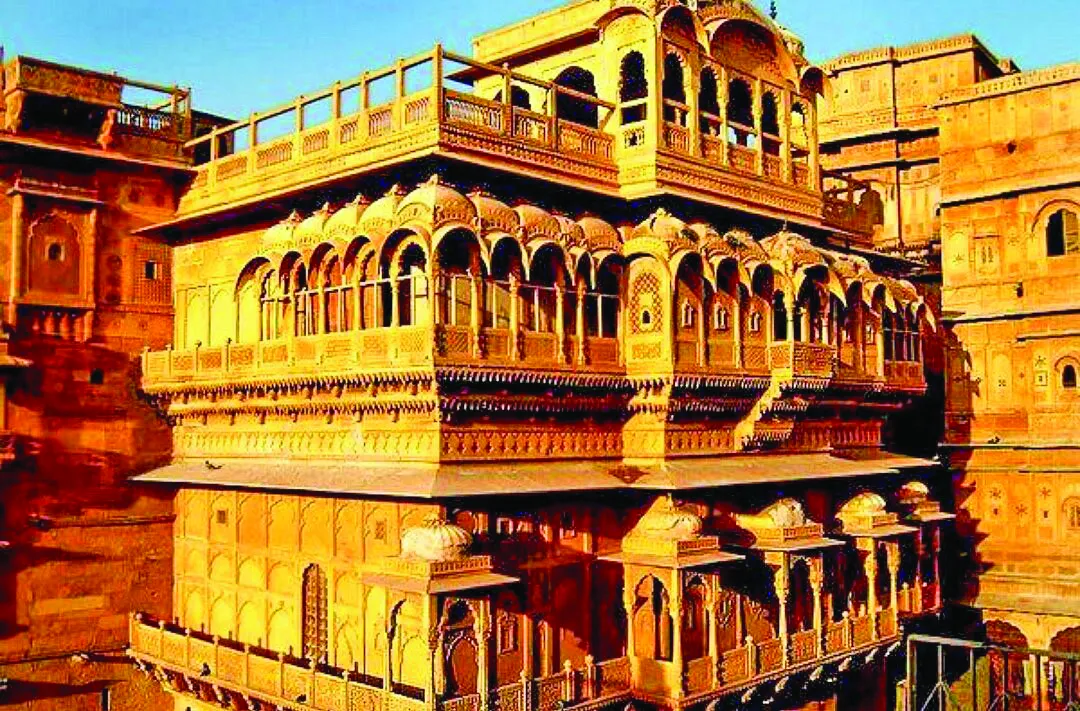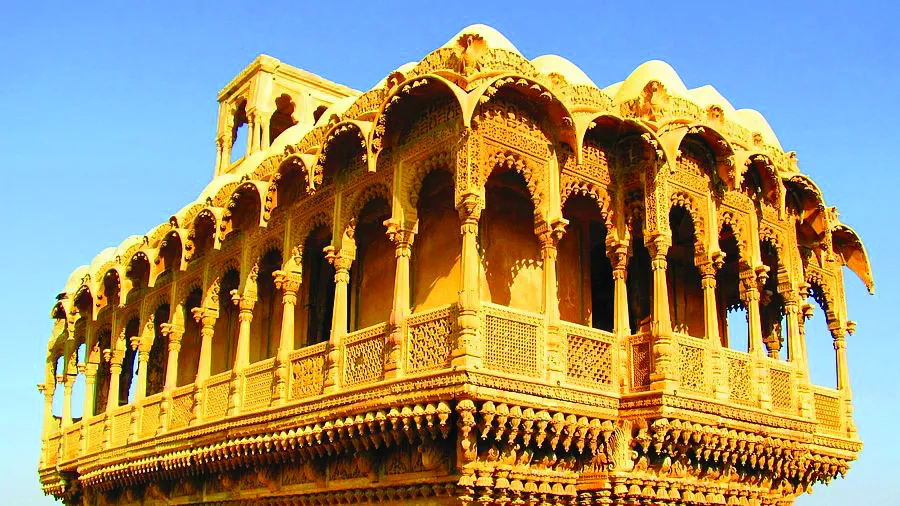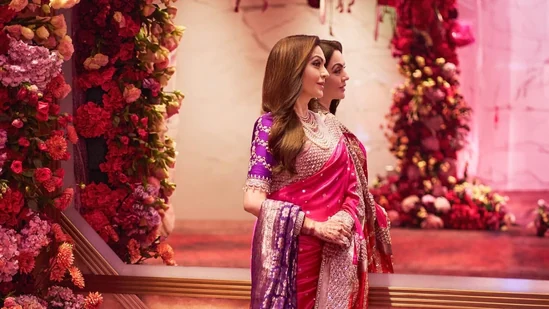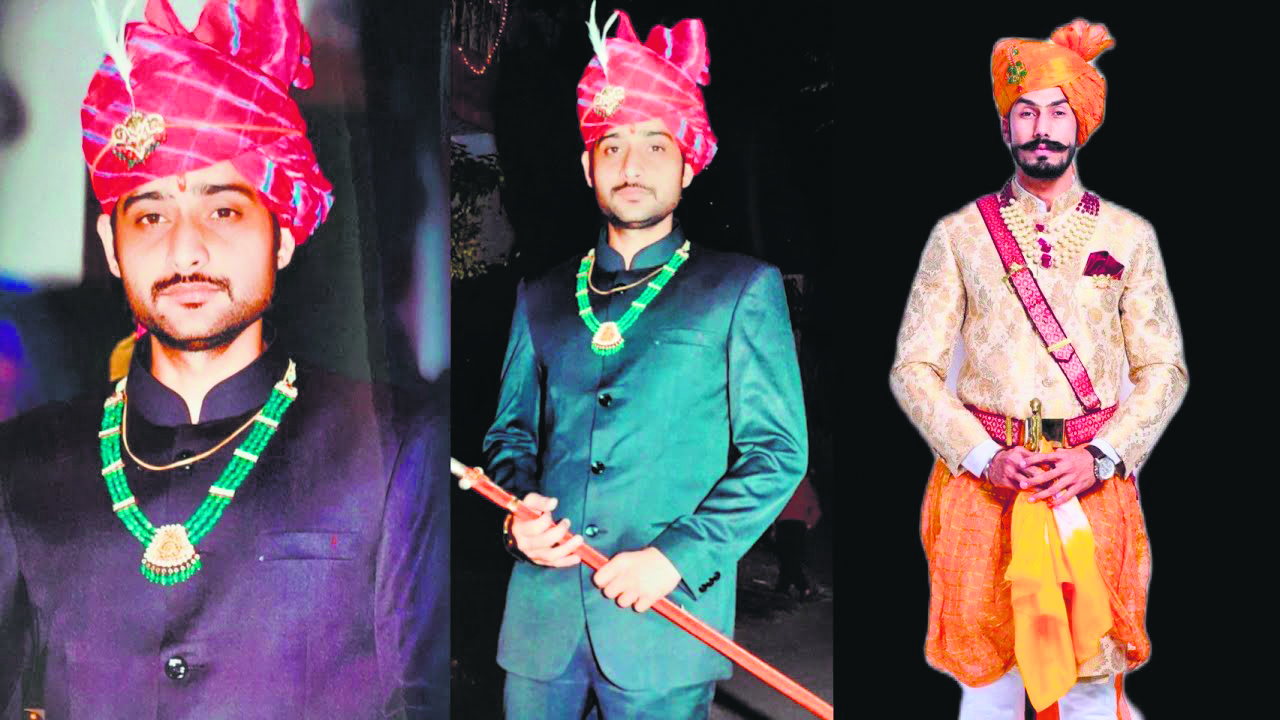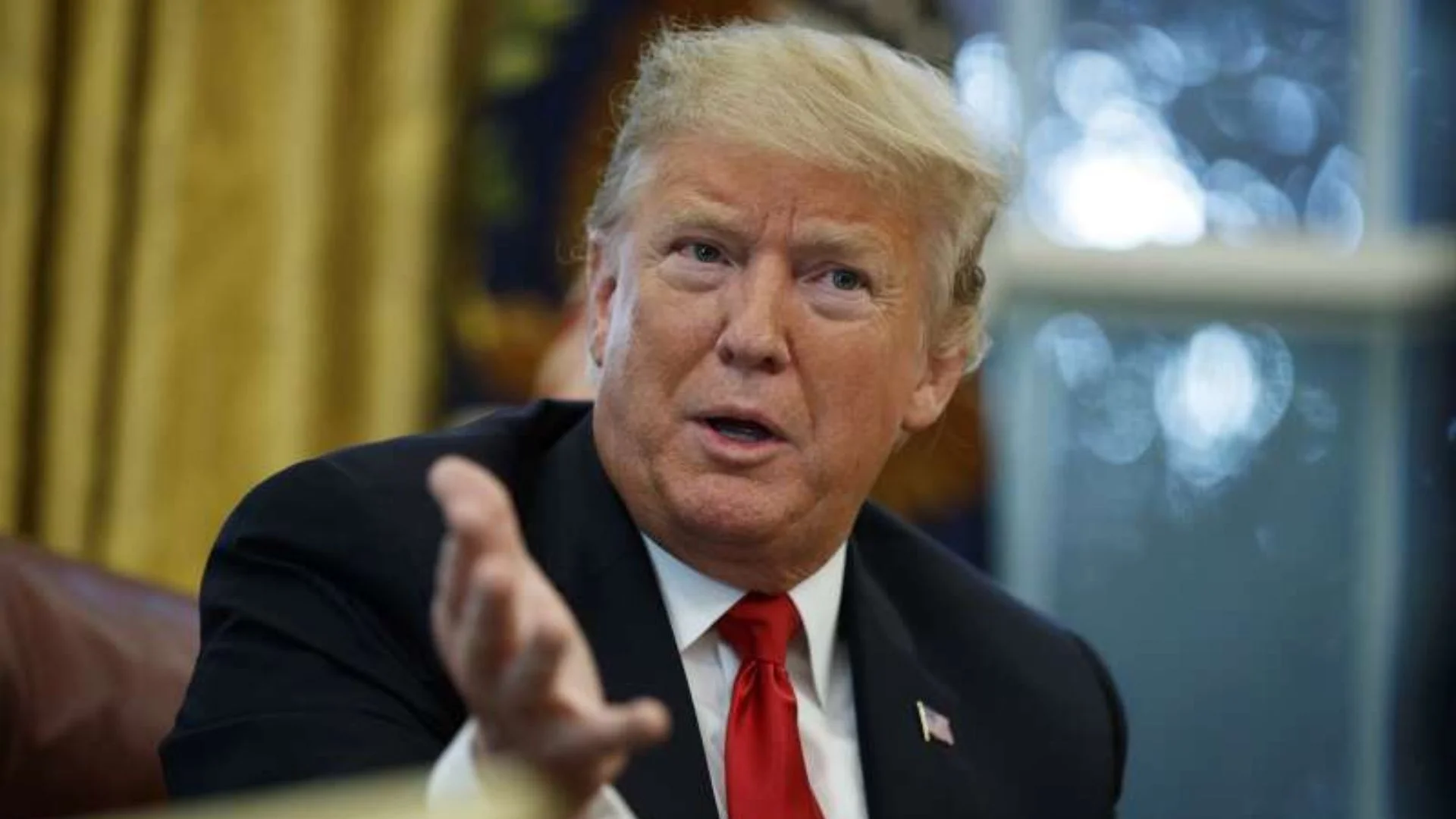India is home to some of the most magnificent forts and palaces in the world. Their architecture and attention to detail are unparalleled, and we draw a lot of inspiration for our brand ethos from the architectural history, wall paintings, and stories associated with these magnificent structures. To celebrate Palace Day on 19 July, brought to India by the Centre for Historic Houses, Royal Fables brings you a collection of quaint stories about the Indian monarchy that testify to those glorious times.

The Laxmi Vilas Palace.


The Mysore throne.

Gundalao Lake, Kishangarh.

GANGAJALI: MAHARAJA SAWAI MADHO SINGH II; HIS WATER GOES WHERE HE GOES
The former King of Jaipur, Maharaja Sawai Madho Singh II, entered the Guinness Book of World Records when he had two enormous sterling silver vessels, the largest in the world, created to carry “Ganga Jal” on his travels to England in 1902 to attend Edward VII’s coronation. He was a devout Hindu ruler who did not consider European water fit for drinking and was aware that he would also require Ganges water to perform religious ceremonies in a foreign land, as orthodox Hindus were not permitted to cross the ocean to reach Europe at the time.
Between 1894 and 1896, these vessels were built over a two-year period and were shaped using a total of 14,000 silver coins. They had the capacity to hold 4000 litres of holy water and weighed 345 kilos, and the unique feature of these vessels is that soldering sections together was avoided.
The Maharaja paid travel agency Thomas Cook Rs 1.5 million (Rs 750 million in today’s value) to charter a brand-new ship on which beef had never been consumed. Six luxurious suites were installed on the ship for the family deity, members of the group, and himself. The SS Olympia set sail from Bombay with 132 servants, a retinue of Hindu priests, over 600 pieces of luggage, and three urns carrying 2,700 gallons of holy water. When the ship encountered stormy waters near Aden, Madho Singh, after consulting with a priest on board, ordered that one of the urns be thrown overboard to appease Lord Varuna. The voyage ended without further disruptions, and the British were taken aback by the sight of such massive silver jars. According to Jaipur chroniclers, King Edward VII personally visited the maharaja’s camp to view the two jars, which can be seen at the Diwan-i-Khas of City Palace in Jaipur even today.
QAISAR BAGH: EMPEROR’S GARDEN
Wajid Ali Shah, the last ruler of the kingdom of Awadh, was a great connoisseur of art in all its forms, and his palace reflected that innate personality. He began building the Qaisar Bagh as soon as he ascended the throne in 1847. It was located in the southeast corner of the Chattar Manzil palace, and he envisioned a palace complex that would be a paradise on earth, complete with large gardens that would be the ideal setting for dance, drama, and poetry readings, and is widely credited with the revival of Kathak as a major form of classical Indian dance. One of his biggest contributions was the development of Pari Khana, a school for music and dance that employed 180 female artists, usually drawn from the families of courtesans, dedicated to the promotion of music and dance. He began to stage his magnificent Rahas (a personalized name for Rasleela) full of sensuous poetry, his own lyrical compositions, and glamorous Kathak dances.
The palace is adorned with magnificent pillars, banisters, Hindu umbrellas, lanterns, and Moorish minarets. European-style gilt crowns and statues complement the Mughal-style pavilions. The palace had separate chambers for the royal ladies, in keeping with era traditions, and a majestic 12-door white stone building also stands in the center of the palace.
GUNDALAO LAKE: MAN-MADE LAKE IN KISHANGARH
Gundalao Lake is situated between Purana Sheher’s old city and Madanganj’s new city. The tranquil water flowing in front of the Phool Mahal Palace refreshes, soothes, and calms the environment. This is a man-made lake built by Rao Gunda between 1460 and 1500, 100 to 150 years before Kishangarh was founded.
According to a popular legend, Rao Gunda sacrificed his son to the lake due to scarcity of water, after which it rained heavily, and once, when the pond was full, his son was seen floating on a matka (earthen pot).
This man-made lake is the soul of Kishangarh’s Phool Mahal palace and has served as inspiration for a number of famous Kishangarh miniature artists, including Nihal Chand, and can be seen in many 17th-century paintings. Even today, its setting and myths serve as inspiration for Kishangarh painters working in the traditional style of the Kishangarh school of painting on paper, cloth, wood, marble, and other surfaces.
LAKSHMI VILAS PALACE: GRANDEUR USING INDO-SARACENIC ARCHITECTURE
Vadodara is home to one of the world’s largest palaces, the Laxmi Vilas Palace, which is four times the size of Buckingham Palace and is the largest private residence ever built, spanning over 500 acres.
The most impressive Raj-era palace in Gujarat, its elaborate interiors feature well-preserved mosaics, chandeliers, and artworks, as well as a large collection of weaponry and art. The palace is adorned with paintings by the famous artist Raja Ravi Verma, who was specially commissioned by the then Maharaja of Baroda. It is set in sprawling park-like grounds that include a golf course. The Navlakhi stepwell on the premises is a window into the ancient water resource system built by kings to overcome Gujarat’s parched lands. The LVP Banquets & Conventions, Moti Bagh Palace, and the Maharaja Fateh Singh Museum are also part of the complex.
It was built in 1890 during the reign of Maharaja Sayajirao Gaekwad III, and it exemplifies the magnificent artistry of Indo-Saracenic architecture, a revivalist architectural style popular in India in the late nineteenth century, particularly in public and government buildings in the British Raj
and princely state rulers’ palaces. It borrowed stylistic and decorative elements from native Indo-Islamic architecture, particularly Mughal architecture, which the British considered the classic Indian style, and, less frequently, Hindu temple architecture. The basic layout and structure of the buildings were similar to those of other revivalist styles, such as Gothic revival and Neo-Classical, with specific Indian features and decoration added. The domes, minarets, and arches merged Gothic, Muslim, and Hindu elements. Charles Mant was the principal architect, and he and his team spent over 12 years building this amazing piece of architecture.
MYSORE THRONE: BEJEWELLED ROYAL SEAT
The Golden Throne, also known as Chinnada Simhasana, was the royal throne of the rulers of Mysore and is one of the palace’s main attractions. It is only open to the public during the Dusshera festival, and the rest of the time it is disassembled and stored in the palace’s safe lockers. The throne is made of fig wood and is adorned with ivory plaques. It was adorned with jewellery, gold, precious stones, and silver figurines, and the throne was made with approximately 280 kilos of gold. There are four levels of the decorative tiers of the throne which represent the four aims of human life, that is, Kama (pleasure), Artha (Prosperity), Dharma (Righteousness), and Moksha (Liberation).
The origin of the golden throne is shrouded in mystery, with various legends telling us different stories about its existence. The throne, according to legend, belonged to the Pandavas of the Mahabharata and was located in Hastinapura. Kampilaraya moved the throne from Hastinapura to Penugonda, now in Andhra Pradesh, and buried it. In 1336 AD, Vidyaranya, the royal preceptor of the Vijayanagar kings, showed Harihara I, one of the Vijayanagar empire’s founders, the location of the throne’s burial. He was given the throne by the governor, Srirangaraya, in 1609, and ascended to the throne in 1610. Another theory holds that around 1700, the Mughal emperor Aurangzeb bestowed the throne on Chikkadevaraja Wadiyar.
The throne is also said to be cursed by the former queen, Queen Alamelamma, who jumped into the river Kaveri, prior to which she cursed that Talakadu becomes a barren land, Malangi turn into a whirlpool, and may Mysore kings never beget children.” This actually came true, and 400 years since, the Wadiyar dynasty never had any children for alternate generations.
The gem-studded Golden Throne has been put on public display inside the Mysore Palace only during Dusshera.

